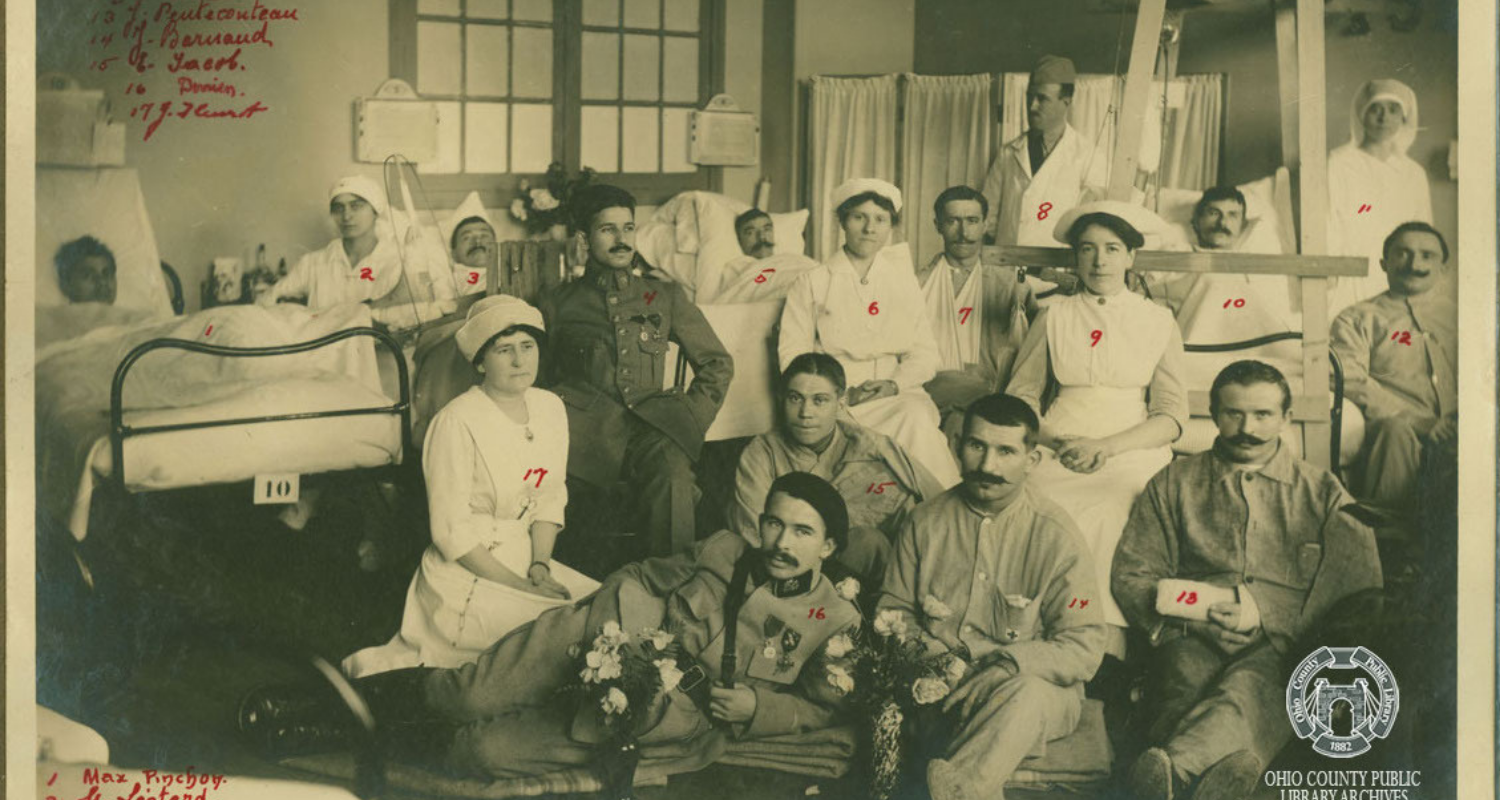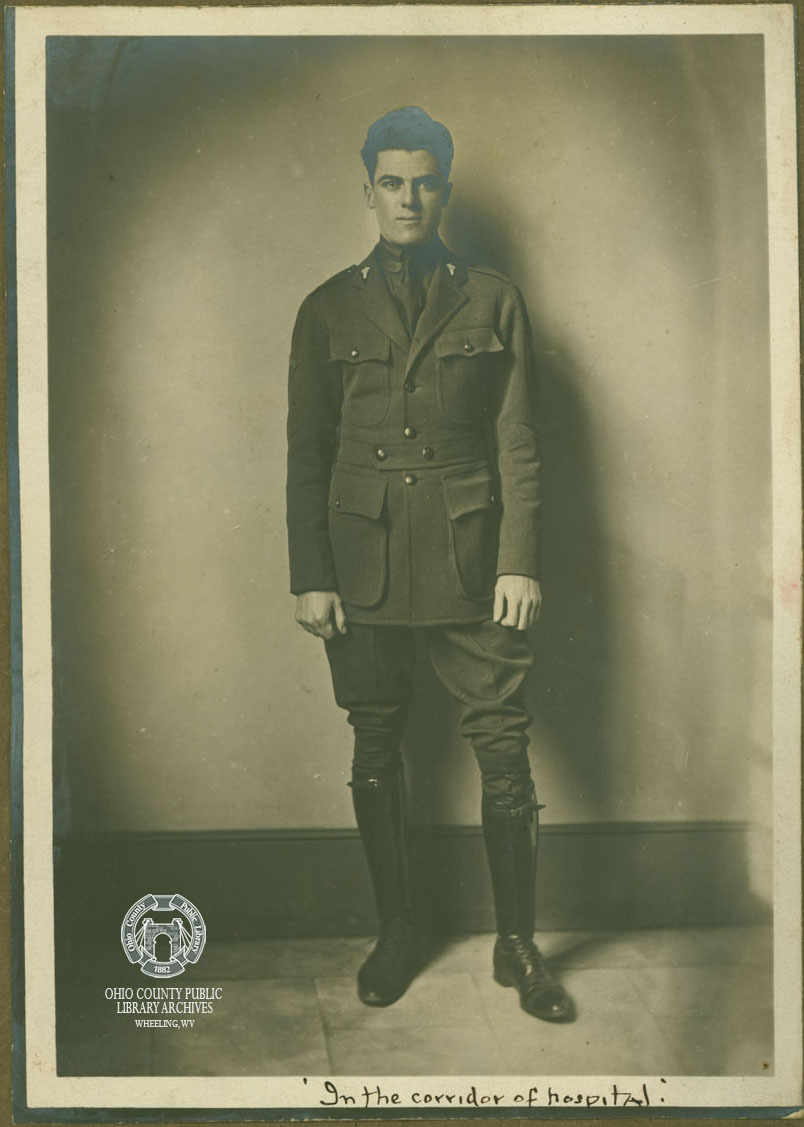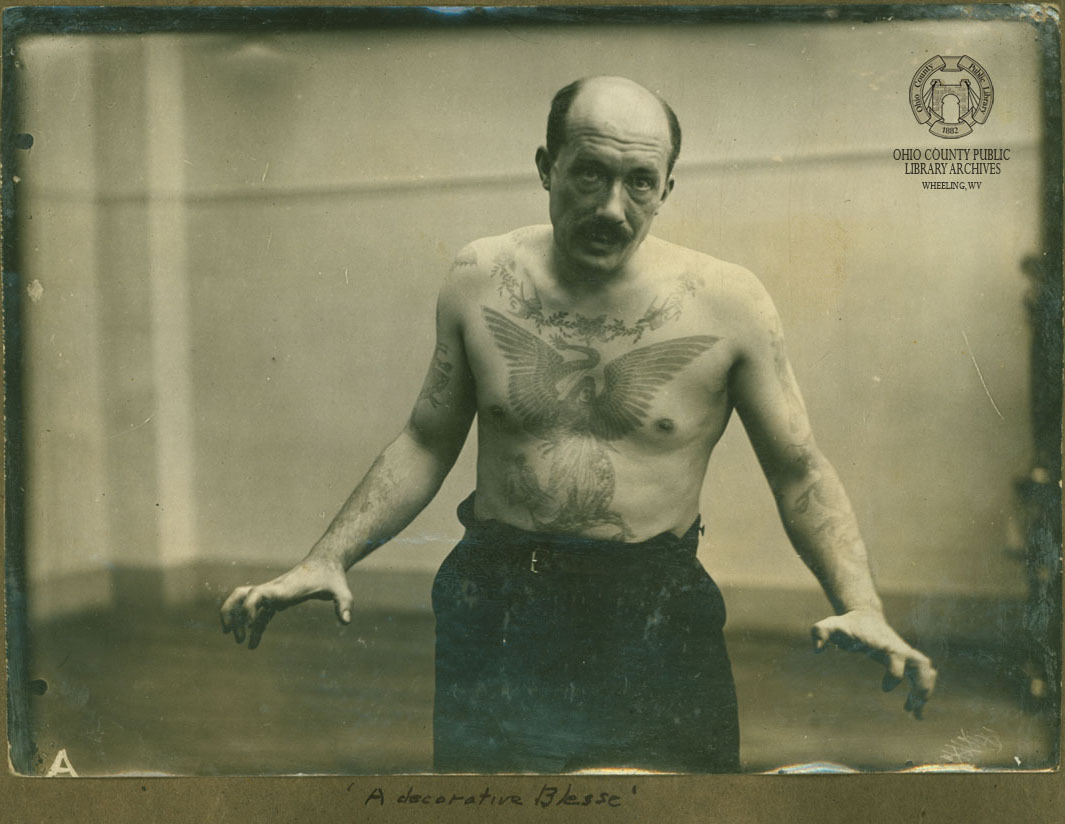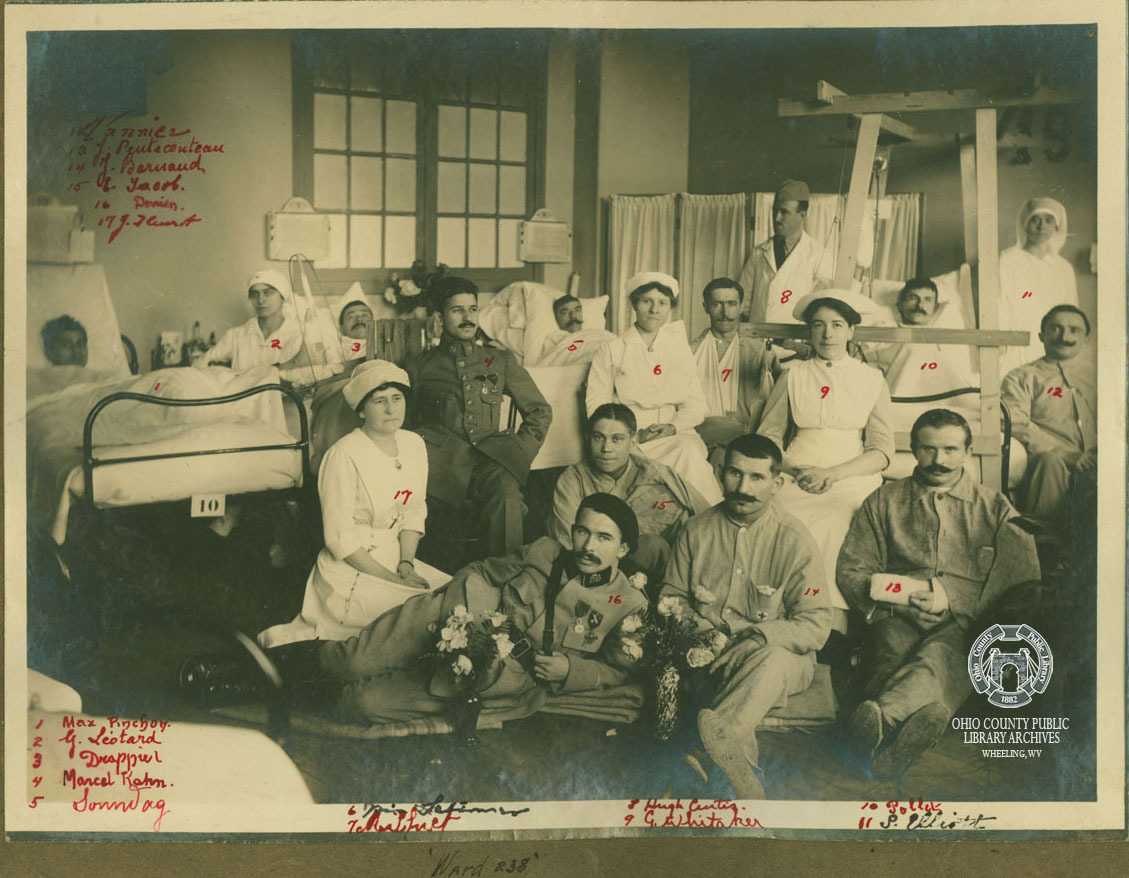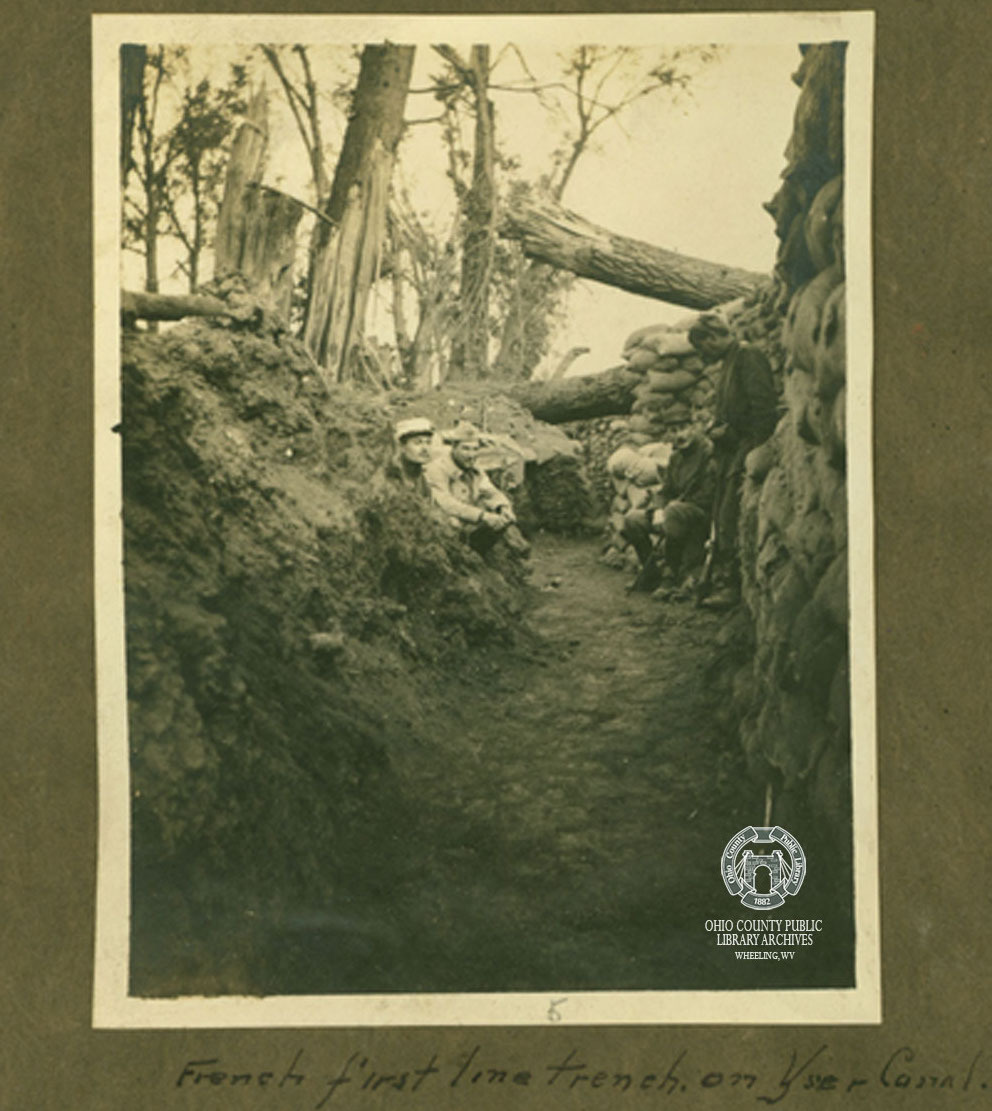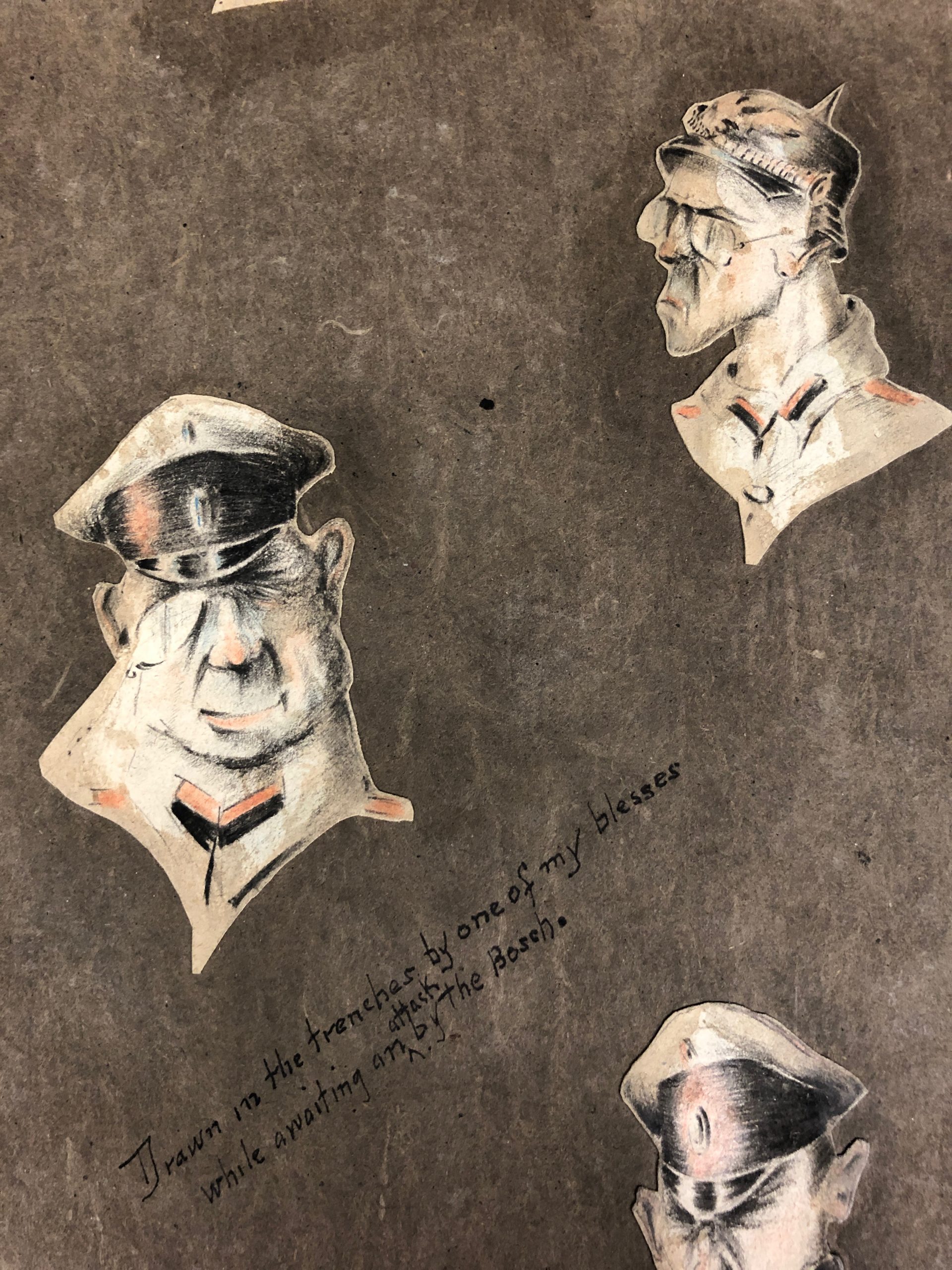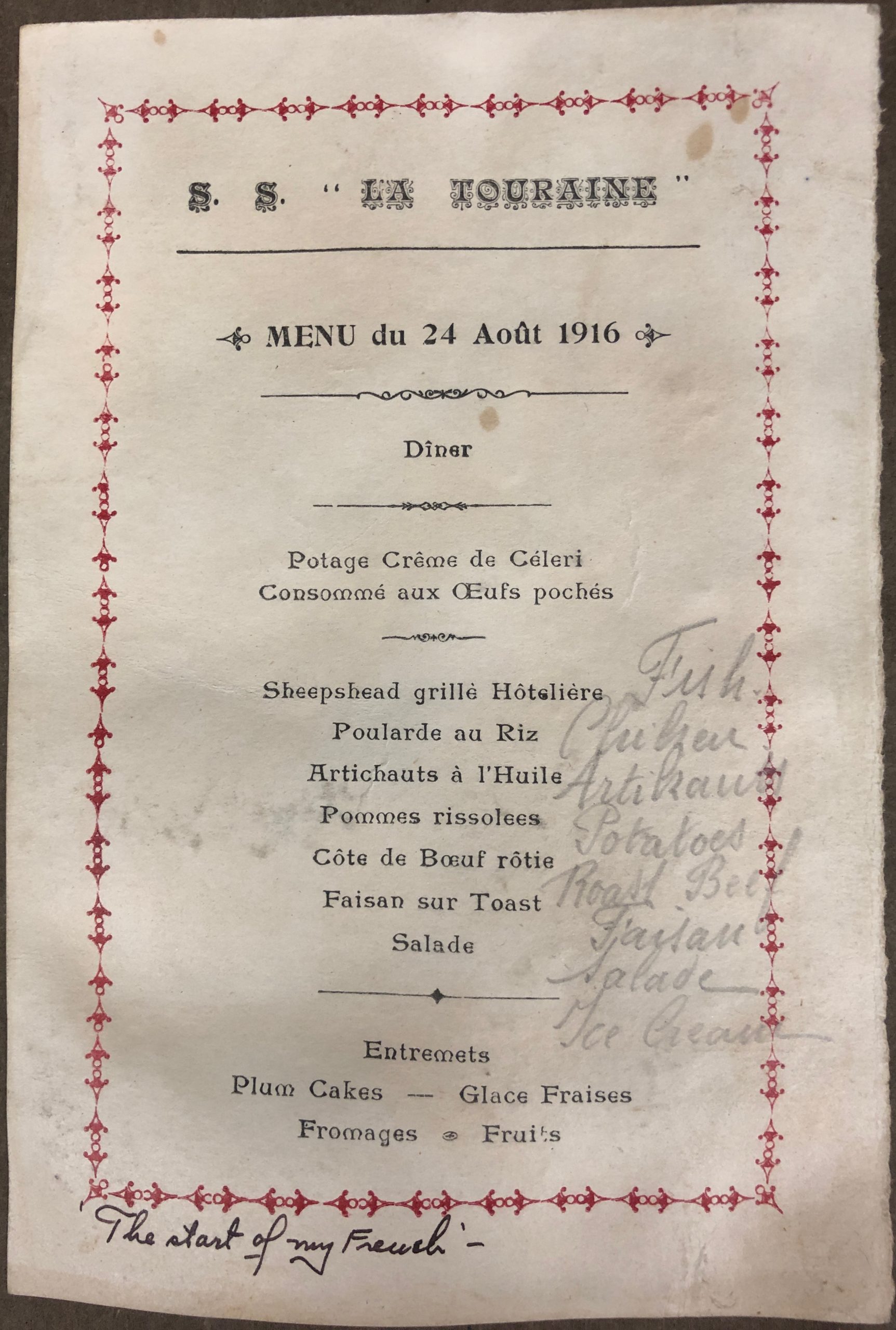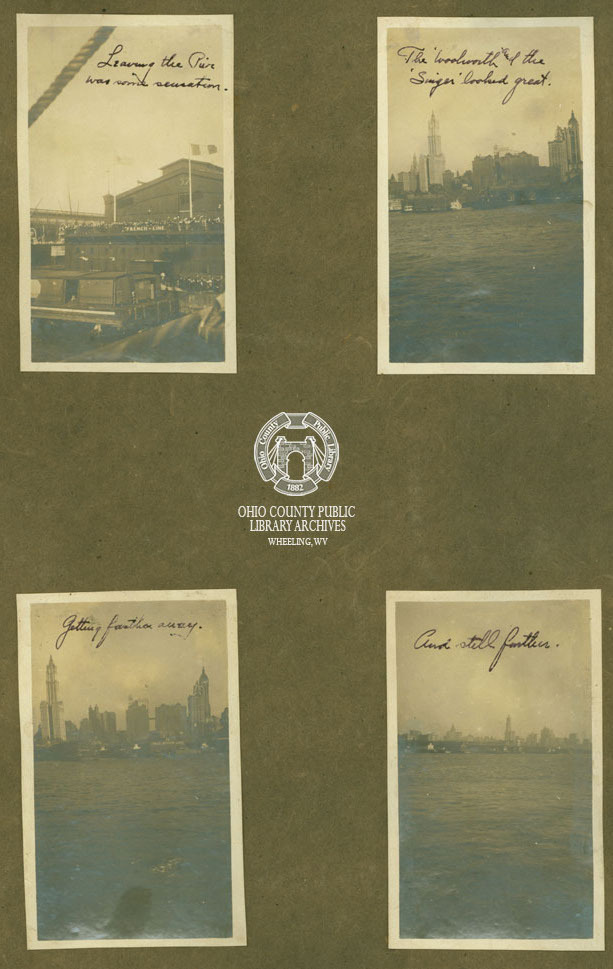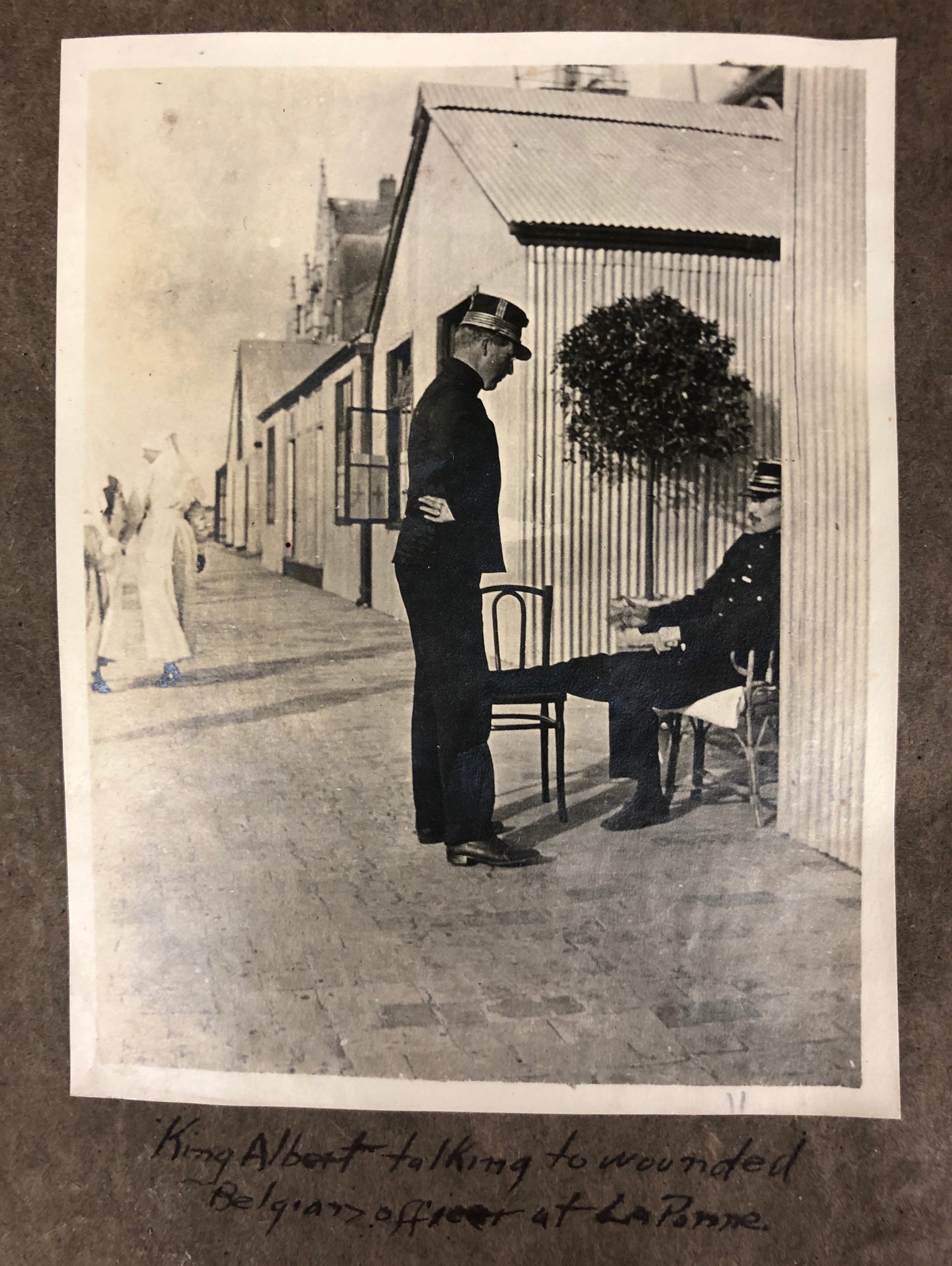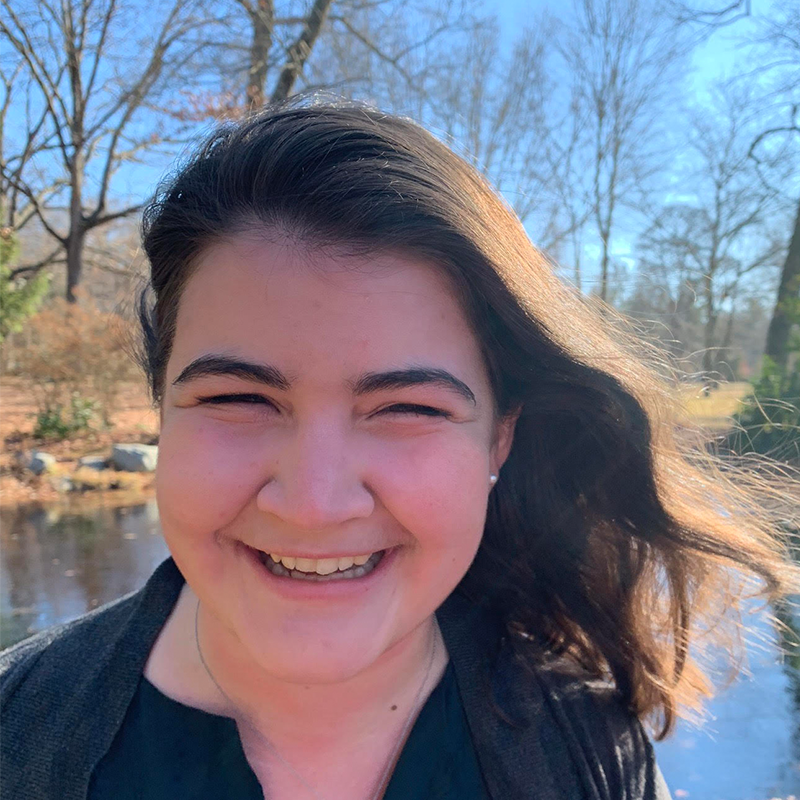Dr. Raymond A. Tomassene was only 24 when he departed New York City on the ocean liner, La Touraine, bound for France. Fresh out of medical school, Tomassene was headed to the American Ambulance Hospital in Neuilly, France to lend his medical and surgical services to treat wounded World War I soldiers.
In stunningly clear and vivid photography, Tomassene documented his experiences at the hospital, the people he met and the scenes he encountered in war-torn Europe. Included in his scrapbook are close-up photos of wounded soldiers’ facial injuries that he brought back to Wheeling to help him hone his specialty as an ear, nose, and throat surgeon.
The American Ambulance Hospital
Raymond A. Tomassene was born in Cincinnati, Ohio on November 3, 1891. After completing his undergraduate education at University of Cincinnati in 1912, Tomassene graduated with an M.D. degree from Jefferson Medical College in 1916. That same year, while interning at the Post-Graduate Hospital in New York City, he decided to join a Pennsylvania unit to serve as a doctor in WWI.1
At the time that Tomassene joined the service, the US had not yet formally declared war on Germany to join WWI. However, at the start of the war in Europe in 1914, a group of American expats in France decided to organize a neutral military hospital that would serve wounded soldiers, regardless of which side of the trenches they came from. These efforts were the continuation of a smaller, pre-existing American staffed and supported hospital that had been founded a little less than a decade earlier in 1906.2
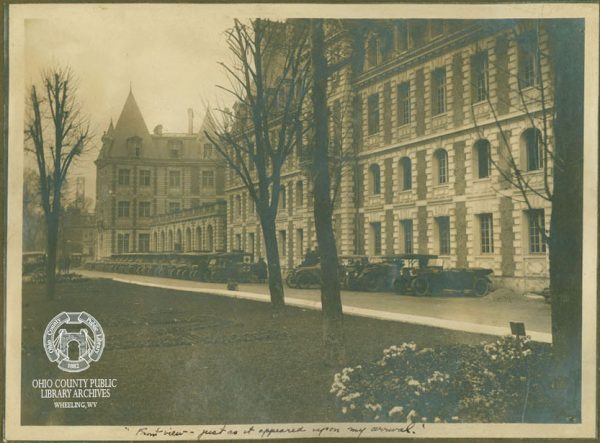
The French government supplied the newly finished school building, the Lycée Pasteur, in the Paris suburb of Neuilly to house the operation and the new hospital was named the “American Ambulance Hospital”—“ambulance” being the French word for military hospital. The hospital opened in September 1914 with approximately 170 beds and was staffed and funded by American volunteers and donors.3 The operations also included a dentist’s office and a motor ambulance service that retrieved wounded from the front and field hospitals and transported them quickly for further treatment at Lycée Pasteur. Particularly before the US was officially involved in WWI, the American Ambulance Hospital was the focus of lots of American charitable contributions, accounting for an estimated $1 million (in today’s currency) of donations.4
A few months after opening, in January 1915, the American Ambulance started receiving rotations of recent medical school graduates from the States.5 The hospital needed all the help it could get, and it gave new doctors the opportunity to refine and develop their skills, particularly in high-pressure situations. One of those young doctors was Raymond Tomassene.
A Picture is Worth A Thousand Words
Tomassene departed New York City on the ship, La Touraine, on August 19th, 1916, bound for France. Most likely his first trip out of the country, Tomassene took several photos of the NYC skyline as the ship pulled further and further away from shore. The first few pages of Tomassene’s scrapbook document the newness of his endeavor. The scribbled translations on the side of his dinner menu indicate he was trying to start learning French on the ship and he made sure to document his first view of the hospital when he arrived at Lycée Pasteur.6
Tomassene’s scrapbook includes remarkably clear and vivid photographs of people such as patients, nurses, soldiers, and other doctors. In addition, Tomassene recorded rare scenes that he experienced, such as King Albert of Belgium visiting wounded and floating dirigibles (zeppelin balloons). At some point, Tomassene visited the front, probably in Belgium, where he took photos of soldiers in trenches and German prisoners of war.7
Due to the advancement of warfare technology, World War I is noted as being a significantly more destructive war than previous conflicts. The use of machine guns, chemical weapons and aircrafts caused death and injury on a scale never seen before.8 Included in the back of Tomassene’s scrapbook are numerous close-up photographs of soldiers who had sustained significant facial injuries. Tomassene used these photos to study and refine his specialty that he eventually brought to Wheeling as an ear, nose, and throat surgeon. The photos are not included in this article due to their distressing nature, but they can be viewed at the Ohio County Public Library Archive with an appointment.9
Even though he was in France to be a doctor and treat the wounded, Tomassene captured a unique perspective that he would eventually bring back to Wheeling, WV.
Bringing Expertise to Wheeling
In line with the rotation practices of the American Ambulance Hospital, Tomassene’s service in Europe was not extensive. While it is unclear exactly when he returned to the United States, it was at least by June 5th, 1917—less than a year from when he left for France—as that is the date he registered for the draft in New York City.10
Within a few years, Tomassene got married to Lucy Shaw and they moved to Wheeling in 1921, where they lived the rest of their lives. Tomassene set up his practice in the Laconia Building on Market Street and was a successful ear, nose, and throat surgeon. In addition to his practice, Tomassene was an attending surgeon in the local hospitals and surgeon to the Baltimore and Ohio Railroad.11 His wife, Lucy Tomassene, was an accomplished violinist, becoming a chartered member of the Wheeling Symphony Orchestra.12
Tomassene’s scrapbook is an incredible glimpse into the experiences of a young American doctor serving in WWI. It evidences camaraderie and wonder of a new place but also the horrors and destruction of war – experiences he brought to his work and life in Wheeling.
• Emma Wiley, originally from Falls Church, Virginia, was a former AmeriCorps member with Wheeling Heritage. Emma has a B.A. in history from Vassar College and is passionate about connecting communities, history, and social justice.
1 “Wheeling Doctor Succumbs,” Wheeling News-Register, February 22, 1976. 2 “The American Hospital of Paris During the Great War,” American Hospital of Paris, accessed July 26, 2021, https://www.american-hospital.org/en/page/american-hospital-paris-during-great-war. 3 “The American Ambulance Hospital in Paris,” Center for the History of Medicine at Countway Library, accessed July 26, 2021, https://collections.countway.harvard.edu/onview/exhibits/show/noble-work-for-a-worthy-end/american-ambulance-paris. 4 “The American Hospital of Paris During the Great War,” American Hospital of Paris, accessed July 26, 2021, https://www.american-hospital.org/en/page/american-hospital-paris-during-great-war. 5 Michael Rauer, “Yanks in the King’s Forces: American Physicians Serving with the British Expeditionary Force During World War I,” ed. Sanders Marble, Office of Medical History, Office of the Surgeon General, United States Army, p. 4-5, accessed July 26, 2021, https://history.amedd.army.mil/booksdocs/wwi/AmericanArmyMCOfficersBEF.pdf. 6 Raymond A. Tomassene World War I Scrapbook, Ohio County Public Library Archive, Wheeling, WV. 7 Raymond A. Tomassene World War I Scrapbook, Ohio County Public Library Archive, Wheeling, WV. 8 “The Technology of World War I,” Smithsonian National Air and Space Museum, April 6, 2017, accessed August 3, 2021, https://airandspace.si.edu/stories/editorial/240-artist-soldiers-technology. 9 Raymond A. Tomassene World War I Scrapbook, Ohio County Public Library Archive, Wheeling, WV. 10 Raymond Albert Tomassene World War I Draft Registration Card, June 5, 1917, United States World War I Draft Registration Cards, 1917-1918. 11 “Wheeling Doctor Succumbs,” Wheeling News-Register, February 22, 1976.; “Raymond A. Tomassene World War I Scrapbook, 1916-1917 Finding Aid,” Ohio County Public Library Archive, Wheeling, WV. 12 “Wheeling Symphony Member Makes Music a Big Part of Her Vacation,” Wheeling Intelligencer, April 18, 1958, p. 19.References


